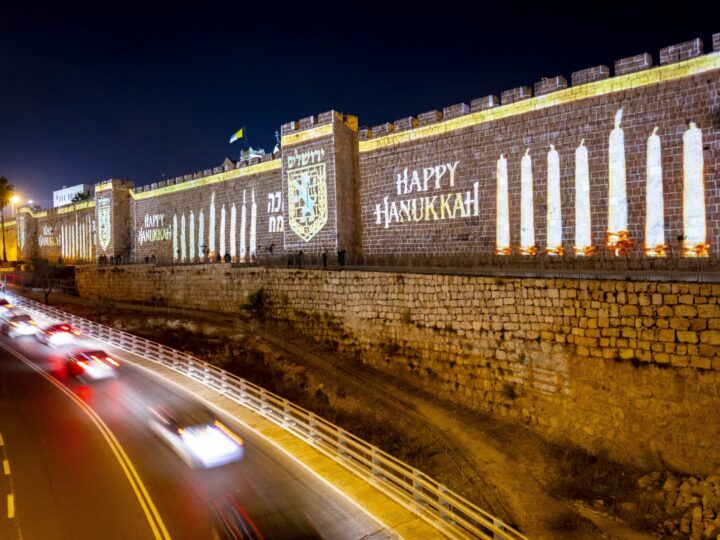The oldest ceramic roofing tiles in the Land of Israel were excavated from the City of David National Park, just outside the walls of the Old City of Jerusalem.
And they have a direct connection with the history behind the Jewish holiday of Hanukkah, which this year falls out from December 8-15.

These 16 Hellenistic-period rooftile fragments date from the second century BCE — the time of the Greek Seleucid King Antiochus IV, the oppressor whose anti-Jewish decrees precipitated the Maccabean/Hasmonean rebellion that led to the rededication (hanukkat habayit) of the Second Temple in the year 164.
The tiles provide evidence of the Greek Seleucid presence in Jerusalem at that time, as well as the earliest evidence for the use of ceramic rooftiles in the Land of Israel, according to archeologists Yiftah Shalev and Filip Vukosavović from the Israel Antiquities Authority and Prof. Yuval Gadot from Tel Aviv University.

They believe it was Antiochus IV Epiphanes who brought these tiles to Israel while he reigned over vast areas of the Middle East from Syria to Persia. Though they are not suited to the Israeli climate, he probably preferred to use them in construction to leave his mark on the built landscape.
“Until now, we had little material evidence for the presence of the Seleucid Greeks in Jerusalem,” said Vukosavović. “It’s very exciting to encounter the Seleucid ruler Antiochus IV ‘face-to-face,’ almost 2,200 years after the events of Hanukkah.”

The tiles will be exhibited for the first time on December 11 at the Israel Antiquities Authority Conference whose theme is “In Those Days At This Time–The Hasmoneans are Coming.”
The event is open for free to the public and will take place between 3pm and 6pm at the Jay and Jeanie Schottenstein National Campus for the Archaeology of Israel. The free event is open to the public and will include a tour of the new National Campus. Details on the Israel Antiquities Authority Facebook page.
Fighting for Israel's truth
We cover what makes life in Israel so special — it's people. A non-profit organization, ISRAEL21c's team of journalists are committed to telling stories that humanize Israelis and show their positive impact on our world. You can bring these stories to life by making a donation of $6/month.








